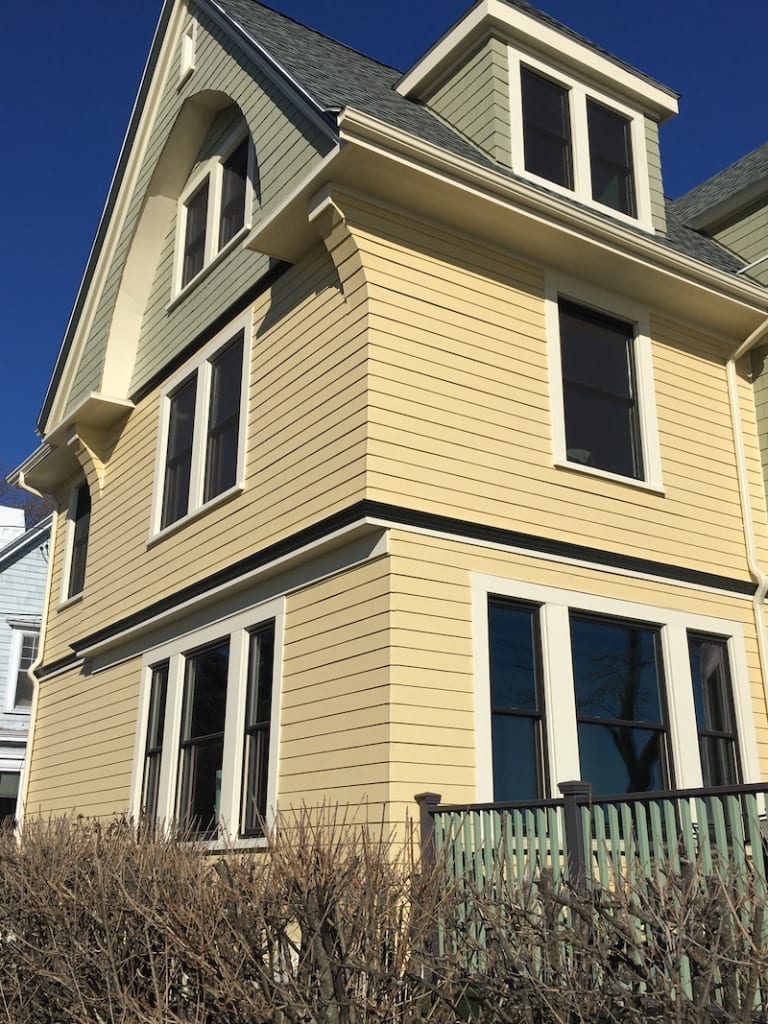If you’re thinking of siding your home, you may be torn between two types: fiber cement or vinyl siding. Both have their benefits and drawbacks, so it really comes down to personal preference, lifestyle, climate and budget. You really can’t go wrong with either one. Let’s go over the features of each one.
Composition
Fiber-cement siding is comprised of wood pulp and Portland cement that has been hardened and formed into long boards or shingles, attached directly to the home with nails.
- Vinyl siding is comprised of PVC and is affixed to your home’s exterior such that it can easily expand and contract with changing temperatures. This happens to be the most common type of siding in this country.
Energy Efficiency
Both types are relatively thin and not very good insulators on their own. That said, they are both quite effective at protecting your house from the elements. Vinyl has an advantage here because you can opt for an insulated version, which can ensure better interior comfort and lower your energy bills.
Insulated vinyl boosts the insulating ability (R-value) of your home’s walls because it blankets the studs — poor insulators and a big source of heat loss called thermal bridging. Insulated vinyl siding ensures your house stays cooler in summer by blocking the sun’s heat.
Strength
Fiber cement hops in the lead when it comes to strength and durability. Because it’s made of cement-like materials and wood fibers, it’s stronger than vinyl and not as vulnerable to wind or weather damage. Additionally, it will not burn, melt or warp when exposed to heat, which can happen with vinyl.
Fiber cement can last up to 50 years with good care, while vinyl may start showing signs of wear after 10.
Texture
While vinyl comes in a textured version that resembles a wood grain, fiber cement is much closer to the authentic texture of real stone or wood. The most common form of vinyl is smooth, which gives off more of a manufactured look than fiber cement.
Cost
When you look at initial prices, fiber cement costs more. However, it lasts longer than vinyl, so it pays off more in the long run. For fiber cement, you will spend $5 to $25 per sf for installation and materials. For vinyl, you will spend $5 to $11 per sq for installation and materials, according to Home Advisor.
Pros of Fiber Cement
There are many benefits of installing James Hardie fiber cement on your New England home:
- Lots of trim and accessories to choose from
- Resistant to fire, wind, insects and rain
- Environmentally friendly
- Wide selection of colors and designs
- Rugged, durable surface
- Technologically advanced material
- Adds beauty and value to your home
- No fading or flaking
- Best for color durability
- Moisture resistant
- Traditional look of natural wood siding without risk of rot
- Great in all climates; fares well with temperature extremes that we experience here in New England
- Resists salt air and high humidity
- Comes in wood-grained or smooth finishes in widths of four to 12 inches
Benefits of Vinyl Siding
Likewise, vinyl siding also poses great benefits to today’s homeowners:
- Affordable
- Enhances curb appeal
- Retains lasting color
- Wide selection of colors, trim, accessories, and styles
- Durable
- Low maintenance
- Resists mildew and mold
- Environmentally friendly
- Easy to install
In the end, you’ll have to do your homework and compare the two to make an educated decision that’s right for you. We can help!
Contact Hi-Tech Windows & Siding
We are a factory-certified James Hardie siding contractor here at Hi-Tech, plus we install insulated vinyl siding as well. Get a free quote on either option when you call us today at 800-851-0900 for an in-home consultation.
- Category: Home Improvement, Siding Company
- 0 comment

